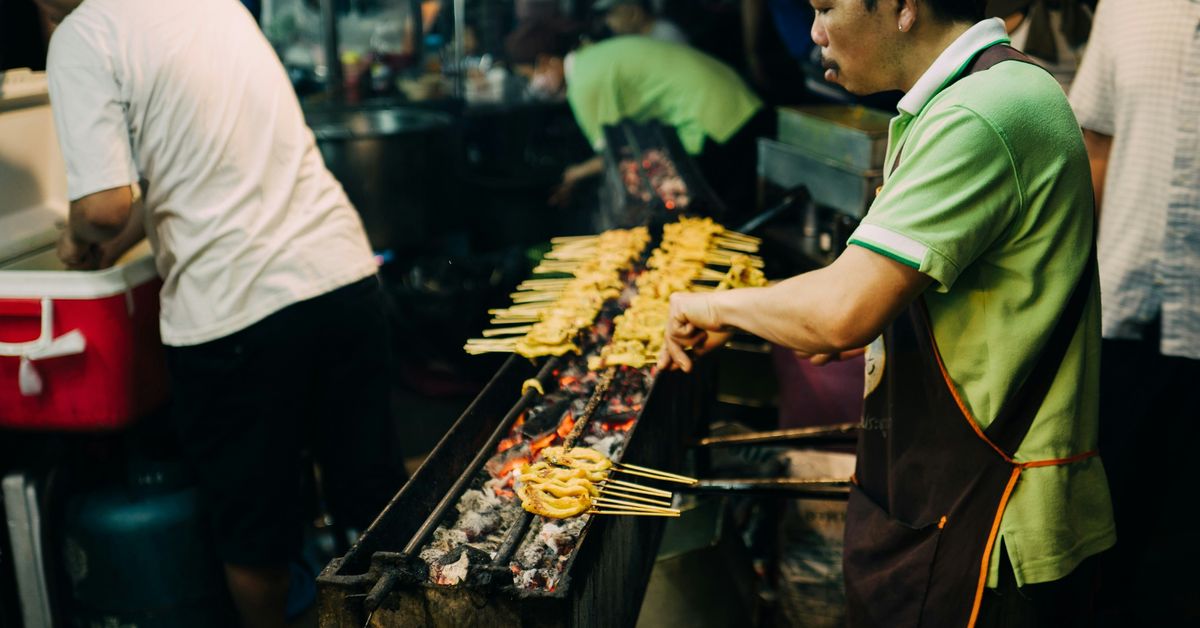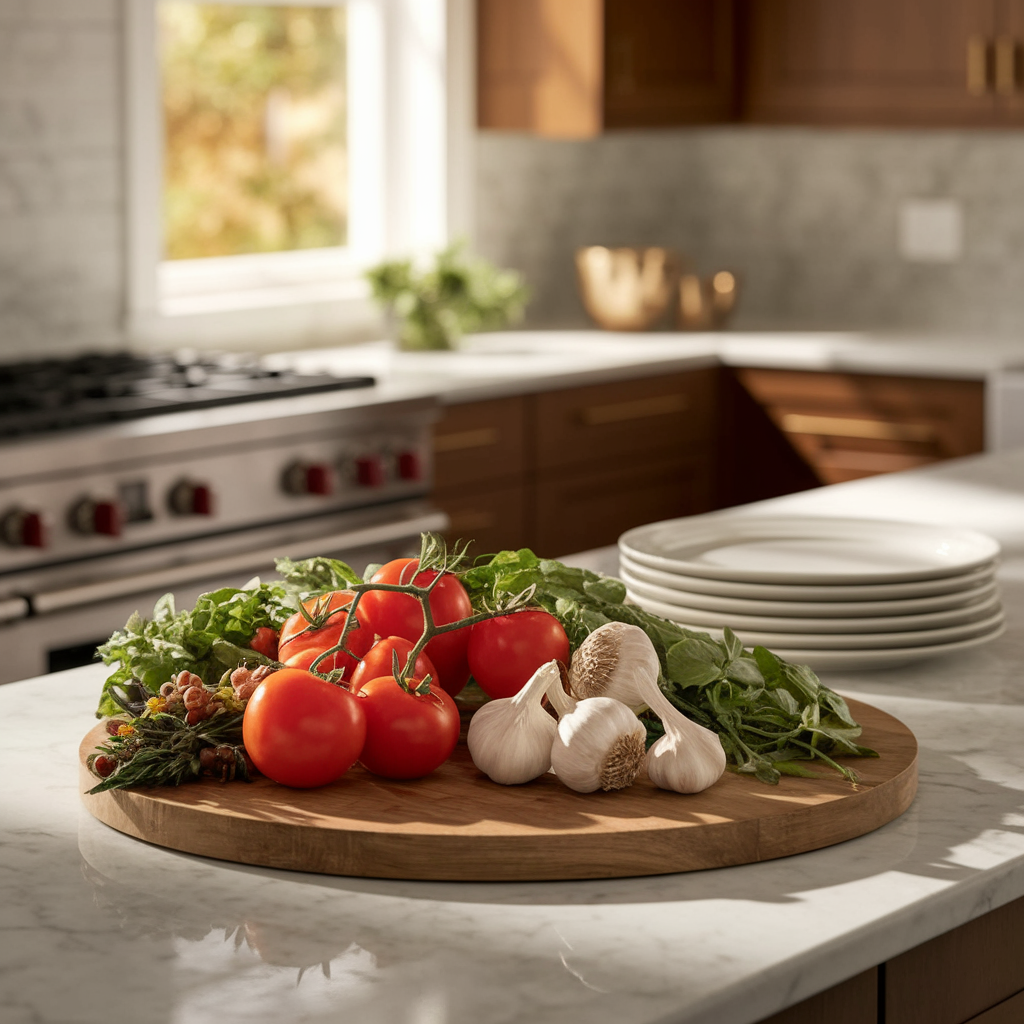Master the Art of Infusing Flavor: Techniques Chefs Don’t Want You to Know!
There’s something undeniably magical about a meal that surprises and delights your taste buds. Have you ever wondered why that dish at your favorite restaurant tastes so much better than anything you whip up at home? It’s not just the fancy plating or the artisanal ingredients; it often boils down to one crucial element: flavor infusion. As someone who has spent countless hours in kitchens—from homey family gatherings to bustling restaurant environments—I can tell you that mastering the art of infusing flavor is a game-changer. So, let’s dive into some techniques that chefs might prefer to keep under wraps.
The Basics of Flavor Infusion
Before we get into the nitty-gritty, it’s important to understand what flavor infusion really means. At its core, flavor infusion is about transferring the essence of one ingredient into another. Think about how a simple herb can elevate a dish or how roasting garlic deepens its flavor. In a sense, it’s akin to creating a flavor bridge—connecting disparate tastes to create a cohesive and exciting culinary experience.
1. The Power of Marinades
Marinades are perhaps the most well-known method of flavor infusion, yet they can be deceptively simple. Why do we marinate? Well, it’s not just about adding flavor; it’s also about tenderizing meat or vegetables. A good marinade typically consists of three components: acid (like vinegar or citrus juice), oil, and seasonings. However, the true artistry comes from how you balance these elements. I remember experimenting with a honey-soy marinade for chicken, and the result was nothing short of astonishing.
Creating a Flavorful Marinade
Here’s a simple yet effective method to create your own marinade:
- Choose your acid: This could be lemon juice, balsamic vinegar, or even yogurt.
- Add oil: Olive oil is a classic choice, but feel free to experiment with sesame oil or avocado oil for different flavor profiles.
- Season it up: Fresh herbs, minced garlic, and spices can all enhance your marinade. (I once added a splash of whiskey to a marinade, and let me tell you, it was a revelation!)
Let your protein or veggies soak for at least 30 minutes, but overnight is ideal for deeper flavor penetration.
2. Infusing Oils and Vinegars
Another fantastic technique involves infusing oils and vinegars with herbs, spices, or even fruits. This method not only adds complexity to your dishes but can also serve as a beautiful finishing touch. Want to take your salad dressing up a notch? Use a rosemary-infused olive oil or a garlic-infused vinegar to elevate the flavor profile.
How to Infuse Oils and Vinegars
To infuse oils:
- Start with a base oil, like olive oil or grapeseed oil.
- Add your flavoring agents, such as fresh herbs, dried spices, or even citrus peels.
- Heat gently on the stove for about 10-15 minutes (don’t let it boil!).
- Strain and store in a cool, dark place.
Infusing vinegars is similar, but you can steep your ingredients in cold vinegar for a couple of weeks. The longer you let it steep, the more intense the flavor will be. Remember, patience is key!
Unlocking Complex Flavors with Cooking Techniques
Now that we’ve tackled some foundational techniques, let’s explore how cooking methods can also influence flavor infusion. It’s all about how you apply heat, moisture, and time. Each method can coax out different flavors from your ingredients—kind of like a dance between the elements.
3. Roasting: The Flavor Enhancer
Roasting is one of my favorite cooking techniques for infusing flavor. It’s not just about cooking food; it’s about transforming it. The caramelization that occurs when you roast vegetables or proteins creates a depth of flavor that’s hard to replicate. For example, when you roast garlic, it becomes sweet and mellow—perfect for spreading on bread or mixing into dips.
4. Searing: Creating Depth
Searing is another technique that chefs often use to lock in flavors. The Maillard reaction—what a mouthful, right?—is a chemical reaction that occurs when proteins are exposed to high heat. This reaction creates complex flavors and aromas that are simply irresistible. Think about a perfectly seared steak or a golden-brown piece of chicken. It’s the kind of thing that makes your taste buds sing.
The Art of Layering Flavors
Layering flavors is an essential technique that not only enhances the dish but also creates a dynamic eating experience. This involves adding ingredients at different stages of cooking to build depth. For instance, when making a spaghetti sauce, you might start by sautéing onions and garlic, followed by adding tomatoes, herbs, and finally, a splash of red wine towards the end. Each layer contributes to the final product, leading to a well-rounded flavor profile.
Experimenting with Spices and Seasonings
Let’s talk about spices and seasonings—they’re the unsung heroes of flavor infusion. Often overlooked, a well-chosen spice can completely change the character of a dish. I can still recall my first experience with smoked paprika. It was like discovering a hidden gem! Suddenly, every dish I made seemed to have a new voice—bold, rich, and smoky.
5. Toasting Spices
A little tip that many home cooks might miss is toasting your spices. This simple step can unlock a whole new world of flavor. Just place your spices in a dry skillet over medium heat for a few minutes until they become fragrant. It’s an easy way to elevate dishes like stews, curries, or even popcorn (trust me, you haven’t truly experienced popcorn until you’ve tried it with toasted spices).
6. The Unexpected Pairings
Sometimes, the most delightful flavors come from unexpected pairings. Take, for example, the classic combination of chocolate and chili. The depth of flavor that emerges when these two ingredients meet is nothing short of extraordinary. Chefs often experiment with contrasting flavors—like salty and sweet or spicy and sour—to create complexity. The key is to balance these flavors so that one doesn’t overpower the other.
7. Infusing with Alcohol
Now here’s a fun twist: infusing flavors with alcohol. Whether it’s a splash of wine in your sauce or a hearty helping of bourbon in your barbecue, alcohol can add a lot of character. The alcohol cooks off, leaving behind a rich, concentrated flavor. I remember making a cherry sauce for duck with red wine, and it was like a flavor explosion. The acidity of the wine cut through the richness of the duck beautifully.
Using Fresh Herbs Wisely
Herbs are perhaps the most versatile ingredients when it comes to flavor infusion. They can brighten up a dish, provide a fragrant aroma, and even add color. However, the timing of when you add herbs can significantly affect the outcome. Fresh herbs are typically best added towards the end of cooking to preserve their vibrant flavors, while dried herbs can be added earlier on since they need time to rehydrate and release their essence.
8. Herb Pastes and Pestos
One of my go-to techniques is making herb pastes or pestos. They’re incredibly easy to whip up and can be used in various dishes. Just blend fresh herbs with nuts, garlic, cheese, and olive oil, and you’ve got a powerful flavor booster. Spread it on bread, mix it into pasta, or use it as a marinade. The possibilities are endless! (I once made a cilantro-lime pesto that was a huge hit at a dinner party—who knew cilantro could shine like that?)
9. Preserved Herbs
If you find yourself with an abundance of fresh herbs, consider preserving them. Freezing them in olive oil or making herb-infused ice cubes can be a game-changer for winter cooking. When the craving for fresh flavors hits, you’ll be prepared.
Building a Flavorful Foundation
Every great dish begins with a solid foundation. For many chefs, this means starting with a flavorful stock or broth. Whether it’s chicken, beef, or vegetable stock, the depth of flavor can make or break your dish. The process of simmering bones or vegetables with aromatics creates a rich base that enhances whatever you add to it.
10. Homemade Stocks
Making your own stock may seem daunting, but it’s surprisingly simple. Toss leftover bones or vegetable scraps into a pot with water, herbs, and spices, and let it simmer for hours. The result is a deeply flavored stock that can elevate soups, stews, and sauces. (I often save vegetable scraps in the freezer just for this purpose—talk about sustainable cooking!)
11. The Magic of Reduction
Reduction is another technique that chefs often employ to concentrate flavors. By simmering sauces or soups to reduce their volume, you intensify their flavors. Think of a rich red wine reduction drizzled over a steak or a balsamic reduction as a glaze for roasted vegetables. The flavors become more pronounced, and the dish transforms into something extraordinary.
Final Thoughts: Embracing Creativity
As we wrap up this exploration of flavor infusion techniques, I want to leave you with this: cooking is as much about creativity as it is about technique. Don’t be afraid to experiment. Some of the best culinary discoveries happen when you take a risk—like swapping out traditional ingredients for something unexpected (I mean, who thought avocado would be a star in desserts?).
So, the next time you find yourself in the kitchen, remember these techniques. Whether you’re marinating, infusing, or simply layering flavors, you have the power to turn an ordinary meal into an extraordinary experience. It’s all about mastering the art of infusing flavor—something every chef (and home cook) secretly wishes they could share. Happy cooking!




